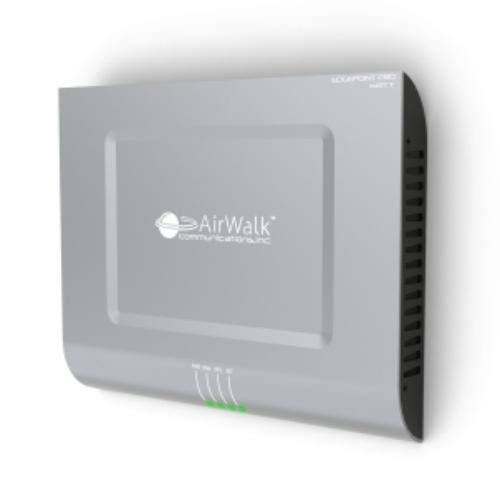AirWalk Unveils Its Enterprise Femto
Just what is an 'enterprise femtocell' anyway?

AirWalk Communications Inc. today helped solve a radio access riddle: What's the difference between a regular Femtocell and an Enterprise Femtocell? (See Femto Shmemto.)
AirWalk's new "EdgePoint Pro" Enterprise Femtocell neatly encapsulates the differences between a femtocell that's suitable for the home, and one that's suitable for business users.
The AirWalk Edge Pro is 3G: Most home basestations are simply 2G devices used to improve cell coverage in a user's dwelling. The Edge Pro supports both CDMA 1xRTT and 3G EV-DO for calls and data coverage. This won't be a differentiation point between home and business femtocells for long, however, as AT&T Inc. (NYSE: T) plans to soon introduce its 3G "microcell" for consumers. (See Cisco Femto Spotted at AT&T.)
The Edge Pro can handle more users: The biz box can support up to 28 users at one time, according to AirWalk. Most consumer-grade femtos are designed to support just a handful of users concurrently. (See Femtos Mean Business for Orange.)
Business casual: The AirWalk box is a flat gray unit that bolts onto a wall. Quite different from the way vendors are designing consumer femtocells into everything from set-top boxes to digital picture frames.  Enterprise femtocells already face plenty of competition in the business world. Carriers and vendors have been deploying Picocells to improve cellphone coverage in offices for years, and vendors are adding 3G and other business features to these radios.
Enterprise femtocells already face plenty of competition in the business world. Carriers and vendors have been deploying Picocells to improve cellphone coverage in offices for years, and vendors are adding 3G and other business features to these radios.
Meanwhile, WiFi networks have been supporting VOIP in business environments for a couple of years, and many more handsets now support WiFi.
— Dan Jones, Site Editor, Unstrung
About the Author(s)
You May Also Like




.jpg?width=300&auto=webp&quality=80&disable=upscale)







